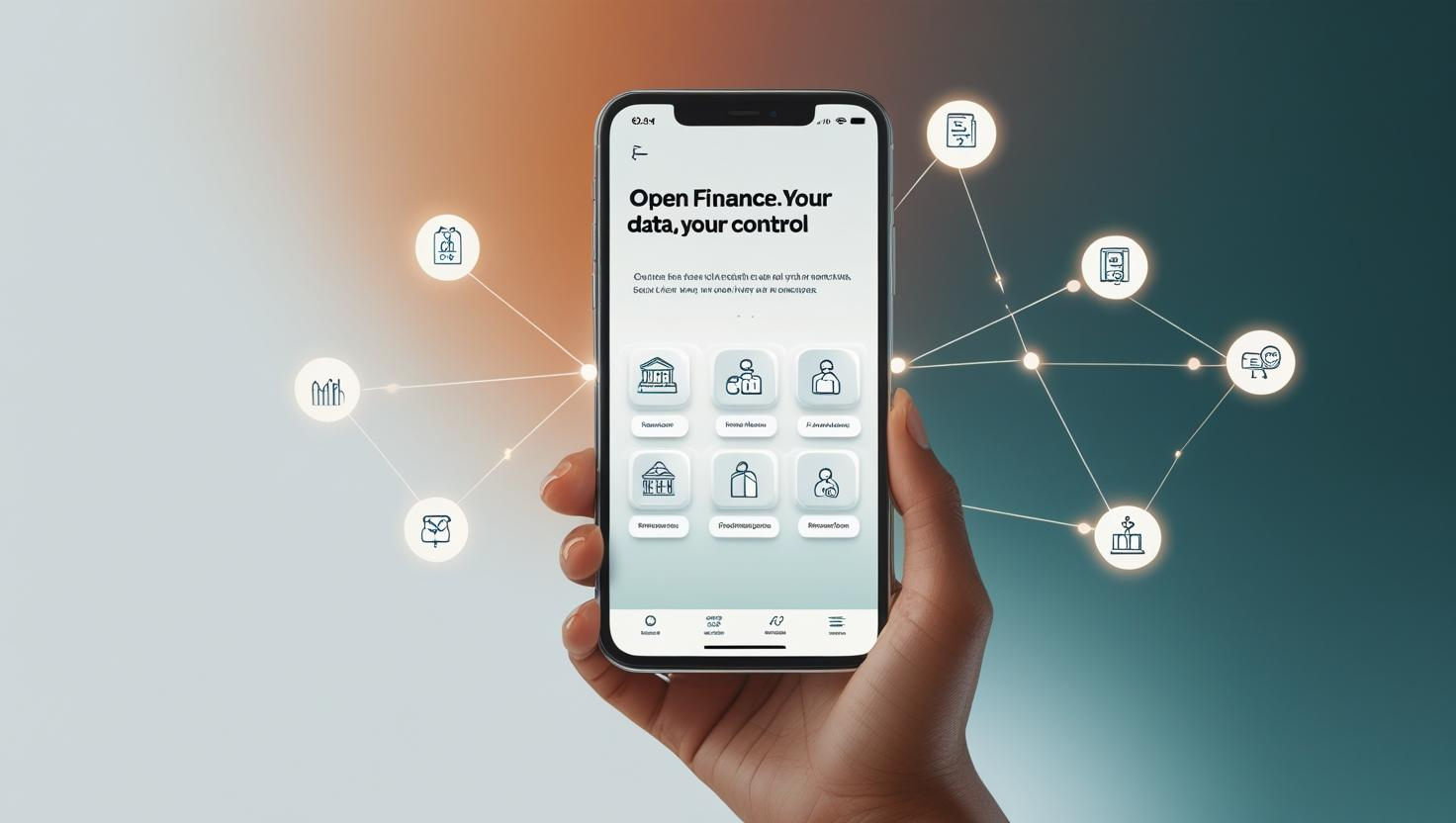Imagine a world where all your financial information—banking, insurance, pensions, and investments—is available in one place, accessible with a tap, and working for you. Not just to view, but to help you make smarter financial decisions, save better, and even get better offers. Welcome to the age of Open Finance—an evolution beyond Open Banking that’s reshaping how we interact with money.
Explore how Open Finance is transforming personal finance in India by integrating banking, insurance, and investments via secure APIs. Understand its benefits, risks, and the RBI’s regulatory support.
🔍 What Is Open Finance?
At its core, Open Finance is about empowering individuals with control over their financial data. While Open Banking allowed banks to share user-approved data with third-party apps (like budgeting tools or lending services), Open Finance broadens this scope.
Now, pensions, insurance, mutual funds, credit cards, and even tax data can be shared—safely and with your consent—through secure APIs. This builds a holistic financial ecosystem where services talk to each other, leading to highly personalized and efficient solutions.
📌 Real-Life Use Cases of Open Finance
Still wondering how Open Finance applies to real life? Here are a few relatable, India-specific examples that show its practical impact:
1. Better Loan Offers Instantly
Ravi, a 34-year-old salaried employee in Mumbai, needed a personal loan. Instead of going through tedious paperwork, he used a fintech app powered by Account Aggregators. The app securely accessed his bank account, salary history, and EPF balance (with his consent). Based on this real-time data, he got a personal loan offer with a 2% lower interest rate—faster and cheaper than his bank could offer.
2. Retirement Planning Made Easy
Priya, a school teacher in Pune, had NPS, PPF, and a couple of mutual fund SIPs scattered across accounts. Her financial advisor used an Open Finance platform to bring it all together. In just a few minutes, they could clearly see where she was falling short and suggested a better ELSS plan to help her save on taxes and build wealth faster.
3. Smarter Mutual Fund Investments
Vikas, an IT professional, used an app like Zerodha Coin. Thanks to Open Finance integration with CAMS and KFinTech, the app pulled in all his mutual fund holdings. It flagged some underperforming ELSS funds and recommended direct, low-cost alternatives—saving him over ₹12,000 annually in unnecessary fees.
4. Instant Health Insurance Comparison
Ramesh, a 45-year-old small business owner, wanted better health insurance. Instead of filling long forms, a digital platform accessed his existing policy and claims history via secure APIs. It then suggested a better cashless policy with wider hospital coverage and lower premiums—all in under 10 minutes.
5. Tax Filing Without the Chaos
Neha, a freelance content creator in Bengaluru, dreaded tax season. But this year, her tax consultant used an Open Finance dashboard that pulled her income details, GST filings, and investment proofs from verified sources. No emails, no missing receipts. Her return was filed in just 30 minutes—error-free and stress-free.
These real-world examples show how Open Finance is already reshaping how Indians borrow, save, insure, invest, and file taxes—making financial decisions more transparent, efficient, and personalized.
🛡️ What About Safety and Regulation?
That’s the big question—and regulators are paying attention.
In India, the Account Aggregator (AA) Framework by RBI is already a global benchmark. It enables financial data sharing through licensed intermediaries without compromising user privacy.
But now, countries like the U.S. and UK are pushing for regulatory overhauls, expanding beyond banks and into sectors like wealth tech, insurtech, and retirement services. These new rules focus on:
- Consent-based data sharing
- Data security and encryption standards
- Uniform API formats for scalability
- Consumer rights and opt-outs
India is set to benefit massively with initiatives like Sahamati, and the rapid adoption of UPI, DigiLocker, and Aadhaar eKYC shows we’re ready.
🌐 The Future of Finance: What’s Next?
As Open Finance takes shape, here’s what to expect:
- Personal Finance 2.0: Apps will become intelligent advisors, offering real-time insights across all financial assets.
- Hyper-personalized products: Banks and fintechs will tailor credit, insurance, or investments just for you.
- Financial Inclusion: With easy data access, even underserved populations can access affordable credit and savings options.
🙋 What It Means for You
If you’ve ever felt overwhelmed managing multiple accounts and policies, Open Finance promises relief. But to benefit:
- Stay updated: Follow RBI and SEBI guidelines on data privacy and financial rights.
- Choose verified platforms: Always check if your app uses secure AA or government-backed APIs.
- Take control: Your data is your asset—use it wisely and only with platforms you trust
✅ Conclusion
Open Finance isn’t just a fintech buzzword—it’s a financial revolution unfolding in real time. It gives you the power to control your data, unify your financial world, and demand better services. As regulations mature and tech evolves, expect your financial life to get smarter, safer, and more intuitive.
Whether you’re a young investor, a salaried professional, or a retiree, Open Finance will redefine how you bank, invest, and insure.
📚 References & Further Reading:
- Sahamati: Open Finance Ecosystem in India
- Reuters: US to Overhaul Open Banking Regulations
- Wikipedia – Open Finance
Some internal links you can explore
What is Account Aggregator?
RBI’s Role in Open Finance
How to Secure Your Financial Data
Open Banking vs Open Finance
